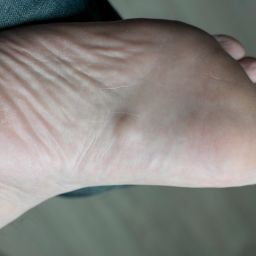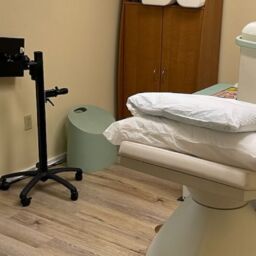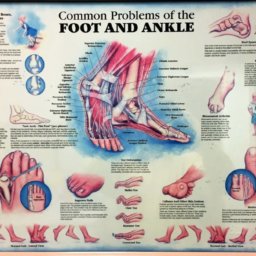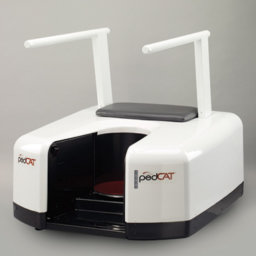
Understanding the Ankle Brachial Index (ABI) and Its Importance in Cardiovascular Health
The Ankle Brachial Index (ABI) is an easy, painless test that checks circulation and helps diagnose peripheral artery disease (PAD). This test compares the blood pressure in the arms and legs to determine how well blood is circulating, particularly in the lower extremities. PAD occurs when the arteries in the legs become narrowed or blocked due to the buildup of plaque, reducing blood flow and increasing the risk of cardiovascular events such as heart attacks or strokes.
Understanding how the ABI test works, its significance, and how it helps in diagnosing cardiovascular diseases can empower individuals to monitor their health more effectively.
What is the Ankle Brachial Index (ABI)?
The ABI measures and compares the blood pressure in the ankle with the blood pressure measured in the arm (brachial arteries). This comparison helps identify blockages or narrowings in the arteries, indicating a person’s risk for PAD. The ABI test is particularly valuable because it can detect PAD even before symptoms like leg pain or cramps begin. This will allow for early intervention and management of risk factors like high cholesterol, hypertension, and smoking.
How is the Ankle Brachial Index Test Performed?
The test is relatively straightforward and typically conducted in a doctor’s office or vascular lab. Patients are asked to lie in a supine position (flat on their back) while their blood pressure is taken from both their arms and their ankles using blood pressure cuffs.
- Blood pressure is first measured in both arms using a blood pressure cuff and a Doppler device or stethoscope to detect blood flow. The highest of the two brachial arterial systolic pressures (the top number in a blood pressure reading) is used as a reference.
- Blood pressure is then measured in the ankles. The Doppler device detects blood flow in the dorsalis pedis (DP) and posterior tibial arteries. The two major arteries supplying blood to the feet.
The ABI is calculated by dividing the systolic blood pressure measured in the ankle by the systolic blood pressure measured in the arm. This provides a numerical value indicating how efficiently blood is flowing through the legs.
What Do ABI Results Mean?
The results of the ABI test can help determine whether someone has normal blood flow or if there are blockages that could indicate PAD.
- Normal ABI: A value between 1.0 and 1.4 is considered normal, meaning that blood flow in the legs is comparable to that in the arms, and there is little to no blockage in the arteries.
- Mild PAD: An ABI value between 0.8 and 0.99 may suggest mild peripheral artery disease, indicating some narrowing in the arteries that could affect blood flow. People with mild PAD may not experience symptoms like leg pain or cramping at this stage.
- Moderate to Severe PAD: A value between 0.5 and 0.79 indicates moderate PAD, while anything less than 0.5 points to severe PAD. People with severe PAD may experience leg pain during activities like walking, and in more advanced cases, they may feel pain even when resting. Reduced blood flow in the legs increases the risk of non-healing wounds and can even lead to limb loss if untreated.
- Abnormally High ABI: Values higher than 1.4 could suggest stiff, calcified arteries that do not compress properly. It can also be a sign of cardiovascular problems and may require further evaluation.
Risk Factors and Conditions Related to ABI
Several risk factors increase the likelihood of developing PAD and other cardiovascular issues. These include:
- Smoking: The leading cause of PAD, smoking damages the arteries and accelerates the buildup of plaque.
- High blood pressure: Hypertension puts extra stress on artery walls, leading to inflammation and narrowing.
- High cholesterol: Elevated levels of cholesterol contribute to plaque buildup, which narrows the arteries.
- Diabetes: Diabetes damages blood vessels and nerves, increasing the risk of both PAD and coronary artery disease.
- Age: As people age, their arteries naturally stiffen, making it more likely for blood flow to be impaired.
People with PAD are at a higher risk for cardiovascular events such as heart attacks and strokes because the underlying cause—atherosclerosis—affects all arteries in the body, not just those in the legs. Coronary artery disease and PAD often go hand in hand, and monitoring both conditions is essential to prevent severe complications.
When is the ABI Test Recommended?
The ABI test is often recommended for individuals who exhibit risk factors for PAD or symptoms of poor circulation. Symptoms to watch for include:
- Leg pain or cramping: Especially when walking or exercising, which subsides when resting.
- Cold feet or toes: Indicating poor blood flow.
- Persistent wounds or ulcers: Appearing on the feet or legs.
- Numbness or weakness: In the legs.
- Elderly People: Over the age of 50? A history of smoking, diabetes, or other cardiovascular risk factors. Consider getting their ABI measured regularly.
Additional Tests: The Toe Brachial Index (TBI)
For individuals whose ABI results suggest stiffened arteries, doctors may recommend the toe brachial index (TBI). This test is similar to the ABI, but instead of measuring blood flow in the ankle. The blood pressure in the big toe is compared to the arm’s blood pressure. The TBI is often more accurate in detecting PAD in people with conditions like diabetes or advanced age. Arteries in the ankle may be too calcified to give reliable readings.
Preparing for the ABI Test
If your doctor recommends an ABI test, it’s essential to prepare by wearing loose, comfortable clothing that allows easy access to your arms and legs. The test typically takes 10 to 15 minutes, is non-invasive and does not require any special fasting or preparation.
Conclusion
The ankle brachial index test is a crucial tool for detecting peripheral artery disease and assessing the risk of more severe cardiovascular events. Comparing the blood pressure in the arms and legs, healthcare providers can gain valuable insight into a person’s cardiovascular health. Regular screening for PAD, especially for individuals with risk factors like smoking, coronary artery disease, or diabetes is recommended. The test can help prevent complications and promote early treatment strategies. If you have concerns about your cardiovascular health or are experiencing symptoms like leg pain, talk to a doctor. Scheduling an ABI test is important and it is quick because it is non-invasive.















